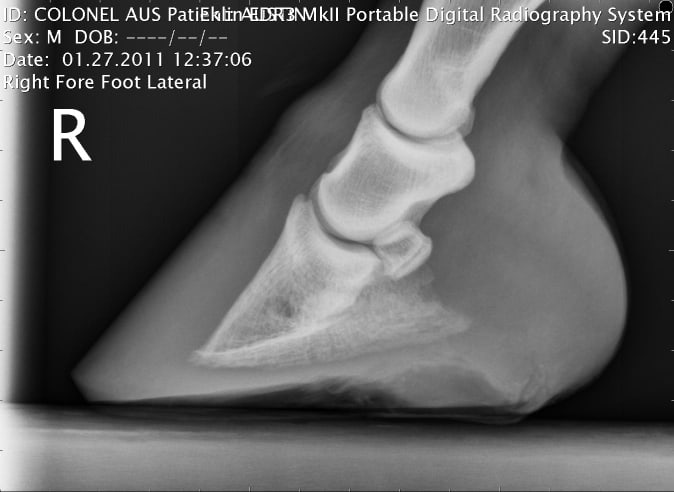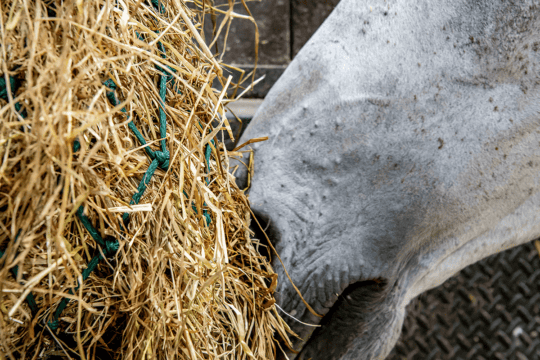The exact cause of laminitis is a subject that has baffled scientists for years. But could new research findings take us a step closer to identifying the risk factors?

The precise causes of laminitis have eluded nutritionists, vets and scientists for many years. However, the latest findings in equine research are bringing us closer to identifying the risk factors and, therefore, coming up with strategies to reduce these risks for horses.
Sugar rush
It is well-recognised that diet-induced laminitis is associated with the over eating of non-structural carbohydrate (NSC) – made up of fructan, starch and simple sugars.
So if we reduce NSC in a horse’s diet, will we reduce the risk of laminitis? Unfortunately, it isn’t that straightforward!
It’s easier to predict the amount of NSC in cereal than forages and pasture. NSC in grass can vary from two to 40 per cent in its dry state, as it uses NSC as fuel to grow, utilising different levels at any given time.
So while grass is actively growing, your horse will be consuming less fructan and sugar. However, bear in mind that even when grass isn’t growing due to environmental factors, energy from the sun is still converted to sugar, which is then consumed by your munching horse! This can trigger the cascade of events resulting in laminitis.
From field to foot
So what is it that connects eating high levels of NSC to a clinical condition expressed in the hoof? This is what causes most debate among laminitis researchers. We know that having high levels of simple sugars and fructan entering the hindgut causes it to become more acidic. But what happens then?
Endotoxins have been implicated in this step of the cascade that results in laminitis. Although they can cause inflammatory effects in horses, endotoxins on their own do not induce laminitis. This suggests that other products of fermentation released from the hindgut may be more important.
The products of this fermentation that trigger acute laminitis are, as yet, unknown. However, scientists have pinpointed ‘vasoactive amines’ as possible candidates.
Amines are vasoactive compounds present in high concentrations in the gut of normal, healthy horses. Research has shown that the production of some of these compounds increases when the contents of the horse’s hindgut are incubated with fructan and other sources of fermentable carbohydrate.
Following a carbohydrate overload, the concentration of amines in the gut contents increases, and it is also higher when horses consume a grass-rich diet. These amines then enter the bloodstream and affect blood circulation to the laminar tissue in the hoof. The result? Laminitis.
Researchers now believe this increase in amines may provide the missing link between hindgut disturbances and disrupted blood flow in the hoof.
The insulin effect
It is well known that overweight horses and, especially, ponies are more prone to laminitis. This may, in part, be linked with concussion, but is more likely to be associated with insulin resistance.
You may have already heard of insulin resistance, as it is often referred to in human medicine. It contributes to several metabolic conditions and is a risk factor for the development of many diseases, in both humans and horses. In man, these include type II diabetes, obesity, coronary heart disease and cancer. In the horse, changes in insulin sensitivity are associated with certain diseases, including some forms of tying up, developmental bone problems, hyperlipidemia and laminitis.
In a nutshell, insulin sensitivity means that a given concentration of insulin is unable to exert its normal effect on the body – ie, regulate blood sugar levels – so the body just keeps on releasing more and more to elicit the same effect. This change in metabolism is a dangerous situation and one of the most predictable predisposing factors determining whether a horse may go on to develop laminitis at a later date, if presented with an appropriate trigger – eg, grass high in soluble carbohydrate.
Obesity, diet, or simply being a pony have all been shown to affect insulin sensitivity. Research findings suggest that the risk of laminitis in an overweight equine is more closely associated with the development of insulin resistance, particularly if he has unevenly distributed fat deposits, such as a cresty neck or a fat-pad at the base of the tail.
Insulin sensitivity has also been shown to be lower in laminitic animals, suggesting it plays a role in the development of the condition. The ‘syndrome’ of obesity, insulin resistance and laminitis in mature horses has been referred to as either ‘peripheral Cushing’s syndrome’, or an equine ‘metabolic syndrome’.
Diet has also been found to affect insulin sensitivity. If a horse eats a meal high in sugar and starch – eg, cereals – his glucose and insulin levels will strongly fluctuate, which may give out false signals of energy availability. As a result, the insulin sensitivity of the tissue is altered.
From this, you can see why the link between obesity, insulin sensitivity and blood flow to the horse’s foot is such a hot topic for research.
Reducing the risks
In light of the new findings, here are some of the best ways of reducing the risk of laminitis…
- Use oil for extra energy
- Avoid cereal, or ensure it’s processed – eg, steam-flaked or micronised
- Supplement vitamin and minerals, or use a fibre-based feed with these added
- Ensure intake of magnesium is balanced and adequate, for a healthy metabolism
- Feed cereal-based meals at less than 0.5kg per 100kg body weight
- Maintain regular exercise where possible
- Feed a forage with less than 10 per cent NSC
- Feed dieters initially at two per cent current body weight, then drop to 1.5 per cent of their ‘ideal’ weight after a time















